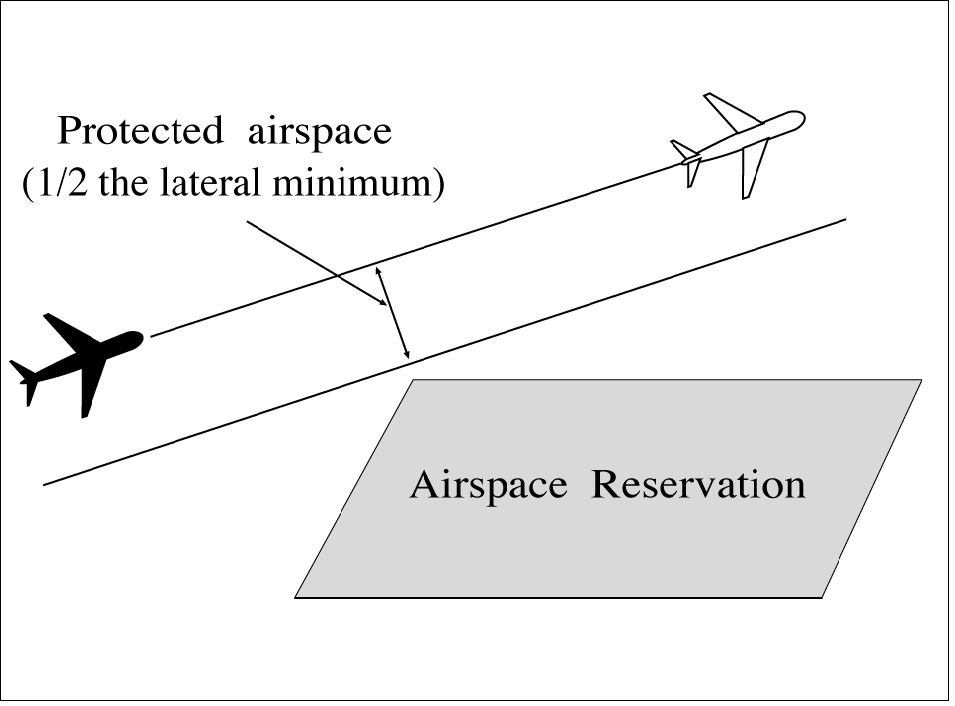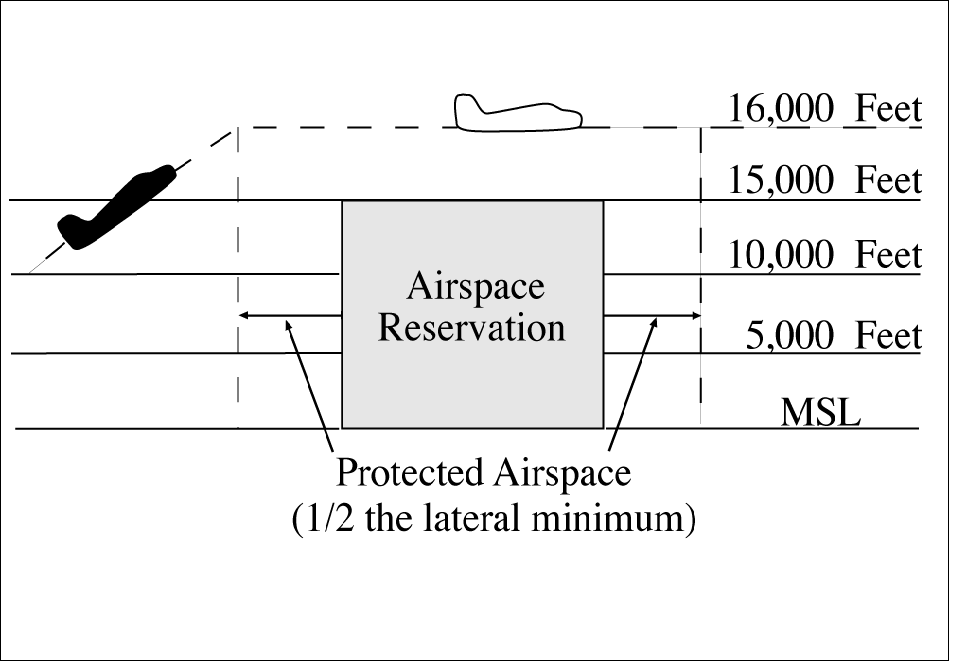Section 6. Separation from Airspace Reservations
8-6-1. TEMPORARY STATIONARY
AIRSPACE RESERVATIONS
Separate aircraft from a temporary stationary
reservation by one of two methods:
a. Laterally: Clear aircraft so that the protected
airspace along the route of flight does not overlap the
geographical area of the stationary reservation.
(See FIG 8-6-1.)
FIG 8-6-1
Temporary Stationary Airspace Reservations
Lateral Separation

b. Vertically: Clear aircraft so that vertical
separation exists while the aircraft is within a
geographical area defined as the stationary reservation plus a buffer around the perimeter equivalent to
one-half the lateral separation minimum.
(See FIG 8-6-2.)
FIG 8-6-2
Temporary Stationary Airspace Reservations
Vertical Separation

8-6-2. REFUSAL OF AVOIDANCE
CLEARANCE
If a pilot refuses to accept a clearance to avoid a
reservation, inform him/her of the potential hazard,
advise him/her that services will not be provided
while the flight is within the reservation and, if
possible, inform the appropriate using agency.
8-6-3. TEMPORARY MOVING AIRSPACE
RESERVATIONS
Separate aircraft from a temporary moving airspace
reservation by one of the following methods:
a. Laterally: Clear aircraft so that the protected
airspace along the route of flight does not overlap the
(time-dependent) geographical area of the moving
airspace reservation.
b. Longitudinally: Clear aircraft so that the
appropriate longitudinal minimum exists ahead of the
first or behind the last aircraft operating within the
reservation.
c. Vertically: Clear aircraft so that vertical
separation exists while the aircraft is within a
(time-dependent) geographical area defined as the
moving airspace reservation plus a buffer around the
perimeter equivalent to one-half the lateral separation
minimum.
|
